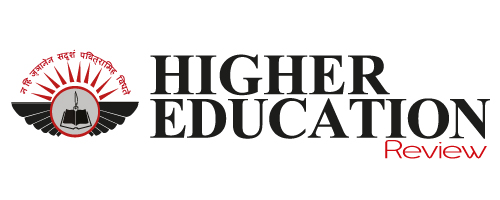Emerging Career Opportunities in Drones and UAV Engineering
 In the past decade, drones more formally known as Unmanned Aerial Vehicles (UAVs) have moved far beyond their initial military origins to become powerful tools across civil, commercial, and industrial sectors. As drone applications expand, so do the career opportunities for engineers, technologists, and operations professionals. From aerial surveying to disaster response, agriculture to infrastructure inspection, the sky is not the limit it’s just the beginning.
In the past decade, drones more formally known as Unmanned Aerial Vehicles (UAVs) have moved far beyond their initial military origins to become powerful tools across civil, commercial, and industrial sectors. As drone applications expand, so do the career opportunities for engineers, technologists, and operations professionals. From aerial surveying to disaster response, agriculture to infrastructure inspection, the sky is not the limit it’s just the beginning.
This article explores how the rise of drones and UAV technology is reshaping the job market and creating new pathways in engineering and operations careers.
The Rise of UAVs: From Niche to Necessity
Once viewed as futuristic novelties, drones are now indispensable in many industries. According to recent industry reports, the global drone market is expected to surpass $90 billion by 2030, fuelled by innovation, regulatory clarity, and growing demand across sectors such as construction, logistics, public safety, and environmental monitoring.
The capabilities of drones ranging from high-resolution imaging to LiDAR mapping, thermal sensing, and autonomous flight have revolutionized data collection and task automation. As these systems become more integrated into business operations, the demand for skilled professionals to develop, maintain, and operate them is rapidly increasing.
Engineering Careers: Building the Future of Flight
At the core of the drone revolution is engineering spanning mechanical, aerospace, electrical, and software domains. Engineers are responsible for designing drone airframes, propulsion systems, sensors, navigation software, and communication networks.
Key Engineering Roles in the UAV Sector:
Aerospace Engineers: These professionals focus on flight dynamics, aerodynamics, and control systems, designing UAVs that are efficient, stable, and mission-capable. With the increasing complexity of autonomous drones, aerospace engineers are also
working on developing Vertical Takeoff and Landing (VTOL) systems and hybrid propulsion.
Electrical & Electronics Engineers: UAVs are packed with sensors, GPS modules, cameras, and communication interfaces. Electrical engineers play a key role in power management, circuitry, and integrating these components to function seamlessly in flight.
Software & Systems Engineers: Behind every autonomous flight is a sophisticated control system. Software engineers design the algorithms for navigation, obstacle avoidance, flight planning, and real-time data processing. AI and machine learning are now central to drone autonomy, opening doors for software specialists to work on cutting-edge applications like swarm robotics and real-time object recognition.
Mechanical Engineers: From foldable propellers to rugged airframes, mechanical engineers ensure the structural integrity and ergonomic design of drones, often working with lightweight composites and modular architectures for efficiency.
Operations and Logistics: New Roles on the Ground and in the Sky
While engineers design and build UAVs, operations professionals ensure that these machines are safely and effectively deployed. As drones become part of everyday workflows, new operational roles have emerged blending traditional skills with new technical proficiencies.
Emerging Careers in Drone Operations:
UAV Pilots and Remote Operators: Certified drone pilots are in high demand for industries like cinematography, surveying, and inspection. While many systems are semi-autonomous, human oversight remains critical, especially in regulated or high- risk environments.
Mission Planners and Data Analysts: A drone’s value often lies in the data it collects. Professionals skilled in GIS (Geographic Information Systems), photogrammetry, or data analytics translate raw drone data into actionable insights, which are vital in fields such as precision agriculture, mining, and infrastructure maintenance.
Maintenance and Support Technicians: Like any other machinery, drones require regular maintenance. Technicians are needed to calibrate sensors, test flight systems, troubleshoot issues, and manage fleet logistics especially in large-scale drone operations for enterprises or public agencies.
Regulatory and Compliance Officers: As drone use grows, so do concerns around airspace safety, privacy, and data security. Professionals with knowledge of aviation law, risk assessment, and regulatory compliance are needed to navigate evolving frameworks such as those set by the FAA (in the US) or EASA (in Europe).
Key Industries Embracing UAV Technology
Agriculture: Drones equipped with multispectral sensors help farmers monitor crop health, detect disease, and optimize pesticide use, improving yields and sustainability.
Construction & Infrastructure: UAVs offer real-time site monitoring, 3D mapping, and structural inspections, reducing risk and speeding up project timelines.
Energy & Utilities: From wind turbine inspections to pipeline surveillance, drones provide safer, faster alternatives to manual checks in hazardous environments.
Public Safety & Disaster Response: Firefighters, police, and emergency responders use drones for situational awareness, search and rescue, and delivering supplies in crisis zones.
Environmental Monitoring: Conservationists use drones to track wildlife, map deforestation, and monitor coastline erosion, aiding in data-driven ecological decisions.
Education and Training Pathways
A career in UAVs doesn’t always require a traditional four-year degree though engineering roles often do. Many technical colleges and universities now offer specialized certifications, diplomas, and even master’s degrees in drone technology, UAV systems, and applied robotics.
For aspiring operators, national aviation authorities typically require licensing or certification (e.g., Part 107 certification in the U.S.). Hands-on training programs are also available for drone piloting, photogrammetry, remote sensing, and data analytics.
Additionally, cross-disciplinary skills are highly valuable. A construction manager with drone flight certification or an environmental scientist with GIS and drone mapping capabilities can greatly enhance their employability and scope of work.
The Future: Drones, AI, and Autonomous Ecosystems
Looking ahead, drones are increasingly being integrated into broader autonomous systems, including Urban Air Mobility (UAM), automated delivery networks, and AI-driven aerial analytics. Concepts like drone swarms, autonomous inspection bots, and drone-in-a- box solutions are already being trailed across industries.
As these technologies mature, demand will surge not only for those who build and fly drones but also for professionals who can manage ecosystems ensuring safety, scalability, and ethical deployment.
Moreover, sustainability is becoming a major theme in drone design and operations. Engineers and technologists are now exploring electric-powered drones with solar recharging capabilities, recyclable materials, and low-noise emissions to meet environmental standards and public expectations.
Final Thoughts: A Sky Full of Opportunity
The rise of drones and UAVs represents more than a technological shift it signals a transformation in how we interact with our environment, gather information, and solve complex challenges. For professionals in engineering and operations, this is a moment of enormous opportunity.
Whether you are designing flight systems, flying missions, analyzing data, or building regulatory frameworks, the UAV sector offers diverse and future-proof career paths. As drone applications continue to expand, those ready to embrace innovation, acquire new skills, and think beyond traditional roles will find the sky is wide open. As we enter a new era where autonomous systems and aerial technologies blend seamlessly into daily life, the need for talent is soaring. Drones are no longer just gadgets they are platforms of innovation, data, and transformation. This is because in the world of drones and UAVs, the future isn’t just being imagined it’s being engineered.
About the Author:
Dr. Amit Kumar Thakur, Ph.D., M.Tech, B.E (Aeronautical), is a distinguished academician and innovator with over 22 years of experience in academia and research. Recognized among the Top 50 Researchers at LPU, he is a recipient of multiple Research Excellence and Appreciation Awards and has served as a reviewer, session chair, and jury member at reputed international platforms.

